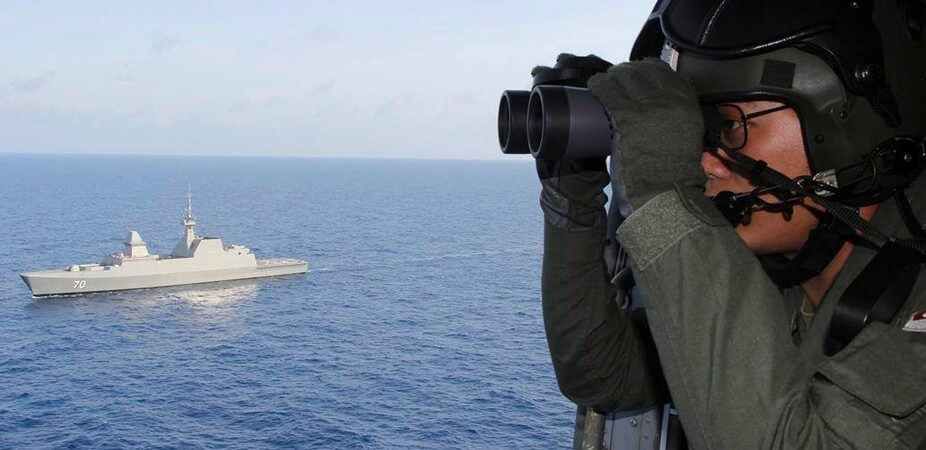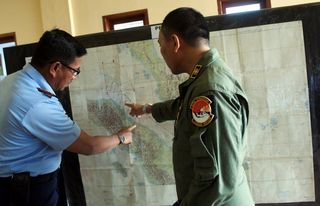
Air Crash Investigation: How the Search for Flight MH370 is Run (Op-Ed)

This article was originally published at The Conversation. The publication contributed the article to Live Science's Expert Voices: Op-Ed & Insights.
The longer it takes, the harder it gets to find the lost Malaysia Airlines flight MH370.
Spotting small objects floating on the surface of the water is a tough task after any air crash. But the more any debris has a chance to disperse, the greater the degree of difficulty in spotting it, even with sophisticated airborne search radars.
The search area has already been widened from the initial location south of Vietnam. The aircraft disappeared on Saturday during a routine flight from Kuala Lumpur to Beijing with 239 passengers and crew on board.
Without a large dose of luck or detection of any of the emergency locator beacons from the aircraft, some of which should have automatically activated but seemingly didn’t, it may take months – even years – to locate the wreckage.
The international response
The Malaysian search teams have been joined by others from Australia, China, the US, Singapore, Vietnam, New Zealand, Indonesia and Thailand.

Such a massive international effort is maintained through conventions governed by the International Civil Aviation Organisation (ICAO), part of the United Nations.
Sign up for the Live Science daily newsletter now
Get the world’s most fascinating discoveries delivered straight to your inbox.
All signatory countries maintain maritime search and rescue organisations that are able to swing into action rapidly in response to an emergency.
The conventions also allow countries in whose jurisdiction an incident occurs to call upon help from others. This allowed the Australian government to act quickly and send two Royal Australian Air Force Orion aircraft to the search effort.
Piecing together answers from a crash
When the aircraft is eventually located the recovery phase should begin fairly quickly, depending on its location and degree of difficulty.
If bodies are recovered, there will be the need to conduct post mortem examinations to determine the nature and cause of death. If the bodies of the flight crew are recovered, their examination may also shed valuable light on what may have happened in the cockpit that led to the crash.
In any wreckage recovery phase, an international collaboration may be necessary to make sure the right equipment is available to access the wreckage, and recover the flight recorders.
While many countries have capacity to analyse flight data, many do not. Some agencies, such as the Australian Transport Safety Bureau, have developed specialist expertise in this area and can provide assistance if requested.
Investigators may also attempt to “reconstruct” the aircraft from any wreckage. They will be looking for any signs or symptoms of pre-crash damage or failures not consistent with the overall damage pattern in evidence from the subsequent crash sequence.
This has been done in many past accidents to help establish the cause beyond doubt, including the Boeing 747 Pan Am 103 flight that exploded over Lockerbie in 1988.
That kind of reconstruction is particularly effective in cases of an internal explosion, because the outward bending of the aircraft skin in the area of the blast may be clearly evident – provided, of course, the sections of skin from around the blast area are recovered.
Who is responsible for the investigation?
Even in the investigation phase, international conventions under the ICAO dictate which state is responsible for the investigation and which others have the right to participate.
ICAO Annex 13 to the Convention on International Air Transportation makes the state where the accident occurs responsible for the conduct of an investigation. This will not be known until the aircraft is discovered.
Where the accident occurs in international waters, the responsibility to mount an investigation rests with the State of Registry of the aircraft, which is Malaysia in the case of flight MH370. Other nearby states are required to provide assistance where possible.
Annex 13 also grants rights to others to participate in the investigation of aircraft accidents. They include the state of registry, the state of the operator and the state of design and the state of manufacture.
Each representative will have full access to all the facts and data collected as part of the investigation, including rights to examine the wreckage, obtain witness information, suggest areas of questioning and make submissions about various elements of the investigation.
Other states can ask to have representatives participate, especially where there is a significant interest, such as where a state might have a lot of the same aircraft type on its register. These requests are generally granted.
Making it safer
The aim of these international conventions is to make sure that – where possible – lessons are learnt from the investigation into accidents, regardless of where they occur. They also allow for any changes to be made to prevent similar accidents from happening again.
The conventions are a vital component of aviation safety and without them an already difficult post-accident situation would be rendered completely chaotic.
The secrets to what actually happened to flight MH370 are locked in the plane’s flight recorders, so let’s hope they’re found before too long so their story can be revealed.
Only that will start the closure and healing of those close to this incident, and provide vital lessons for the rest of us to learn.
Geoffrey Dell does not work for, consult to, own shares in or receive funding from any company or organisation that would benefit from this article, and has no relevant affiliations.
This article was originally published on The Conversation. Read the original article. The views expressed are those of the author and do not necessarily reflect the views of the publisher. This version of the article was originally published on Live Science.











